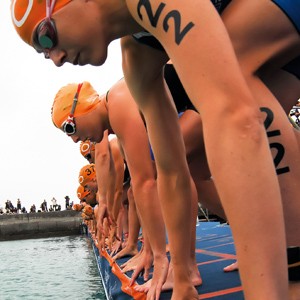Reflections on my lactate testing
If you are serious about getting better at something than you need to test yourself every now and again. For example, you can't claim to be a fast runner if all you do is go for runs but have never stepped up to the line in a race to measure yourself.
However that's the way a lot of people approach their training. The put in training session after training session, week after week and this continues on indefinitely. Not only does this approach never really tell you how good you are if never really tells you what your weak links are and what could be improved.
Lactate Testing at UBCO Recently I had the opportunity to go out to UBCO and do some testing. This was a test performed on a stationary bike to determine my VO2max, lactate threshold, max power and other interesting facts about what my body does when cycling.
The first thing you notice when you do this test for the first time is that it's not comfortable. And I'm not talking about the physical discomfort. That comes later. Instead I'm talking about the unusual sensation of having your nose plugged and a snorkel type of mouth guard connected to tubing that can measure your expired air. In other words a computer can detect changes in the amount of oxygen and carbon dioxide in the air that is exhaled.
So picture a halo type of apparatus sitting on top of your head, with a mouth guard and tubing attached to the computer beside you and a nose plug to ensure gas exchange only occurs through the mouth.
And this is what is a little uncomfortable. Because once in a while in normal living we may have to take an irregular breath. Instead of the normal inhale-pause-exhale pattern of breathing sometimes we choke, gasp or simply need to take air in again right away. When you have both the nose and mouth to draw in air this is not a problem. However when the nose is plugged and air is being exhaled through the mouth you can't draw air in at that moment. And when that instinct to do so happens you choke a little bit. It's a little unsettling at first but you get used to it. Kind of like you get used to snorkelling after a while when you go to the beach.
So how long does this test all take? The time on the bike is maybe half an hour. This includes a few minutes to warm-up and to establish a baseline before the test begins. And at the very end you will probably ride for a few minutes to cool down while the lab technicians remove the halo, snorkel and nose plugs. In terms of actual measuring and sampling this took just over 20 minutes.
So what did we measure? There is a lot of data collected during a test like this. Volumes of oxygen and carbon dioxide are being measured continuously throughout the test. And these numbers together yield the respiratory exchange ratio which is the amount of CO2 produced to O2 consumed when breathing. Over time with exercise we would see this ratio increase.
During the test I was wearing a heart rate monitor and this was being tracked wirelessly throughout the test. We started the test cycling at 100 watts and increased this by 50 watts every 3 minutes. Later on the heart rate data would be useful to determine lactate threshold and VO2max.
Blood was sampled at three minute intervals as well as the beginning and end of the test. This was done using a blood lactate analyzer which may look like what a diabetic uses to check their blood sugar. It involves a pin prick of the finger to generate a bead of blood that is then placed on the test strip of the lactate analyzer.
I mentioned that power was set at 100 watts and then was increased by 50 watts every 3 minutes. This continued until the 300 watt phase and then the increases were in 25 watt increments. The reason the smaller increments were made later in the test was so that we could have a more accurate estimate of max power. The 25 watt power increases were made every minute.
This part of the test is quite uncomfortable. Imagine climbing a hill on a bike. But again remember to put on nose plugs and a snorkel. Now as the you finish a 3 minute climb of the hill, the hill steepens. And you climb again. Keep doing this pattern of a long climb followed by a steeper climb for as long as you can. But don't forget to put on a nose plug and to breath through a snorkel.
So how did I do? Well here are my numbers:
VO2max 51.2 ml/kg/min
Max power 400 watt
Heart rate at lactate threshold146 bpm*
* This is an estimate of lactate threshold which will be confirmed with some number crunching.
In a future blog I will confirm my heart rate at lactate threshold and also share some plans for future training to improve these numbers. Because the only thing almost as bad as never testing is not re-testing.
Chris [fb-like]
When you subscribe to the blog, we will send you an e-mail when there are new updates on the site so you wouldn't miss them.

Comments